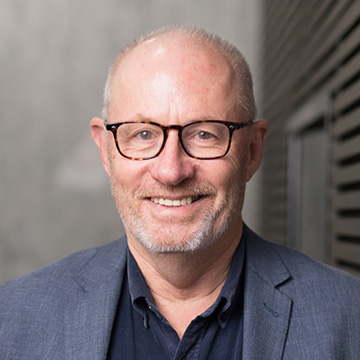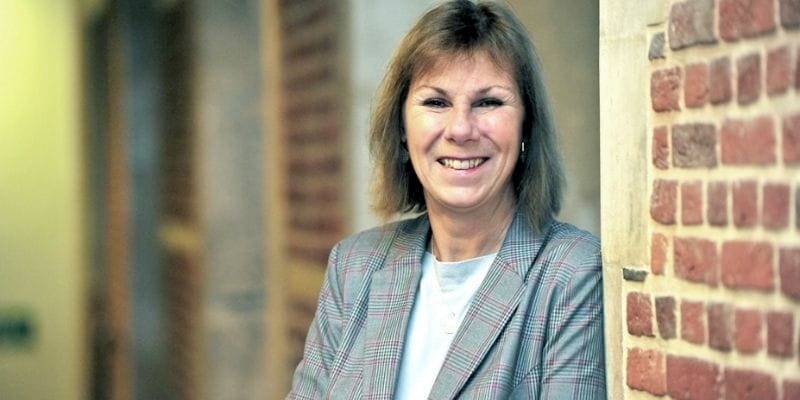Maria Rampa: I’m Maria Rampa and thanks for joining me for this episode of Engineering Reimagined. Today, one in five people live in a city with more than 1 million inhabitants. By 2030, Asia is predicted to be home to 23 megacities, each with a population of 10 million or more. By 2050 the world’s population will be 10 billion, meaning we will need to design and build 10,000 plus buildings a day to cater for this growth.
As cities grow, they also require new and expanded infrastructure as more people need the water and sewage systems, the schools and hospitals and the bigger and faster transport systems that allow people to move around.
Governments and the private sector are increasingly looking at technologies like the internet of things and artificial intelligence to create this smart and efficient infrastructure, which also needs to be designed and built faster and maintained for longer.
In this episode of Engineering Reimagined, Aurecon’s John Hilton is joined by Tim Mumford from the Office of Projects Victoria to discuss how digital engineering and Building Information Modelling can enable complex, smart and efficient infrastructure and buildings to become a reality.
+++++
John Hilton: Tim, you spoke about the Victorian Digital Asset Strategy yesterday here at the World Engineers Convention. That sounds pretty interesting. What is it?
Tim Mumford: The Victorian Digital Asset Strategy is an approach for the Victorian Government, the Victorian Government departments and agencies to take that next leap towards realising the value associated with their physical assets. It seeks to encompass the non-geometrical and geometrical information associated with a physical asset, and bring that into the digital space to aid decision making throughout the life cycle. In a simple way, this is utilising technologies such as Building Information Modelling, digital engineering and GIS to inform decision making for public servants and the government of the day.
John Hilton: You mentioned Building Information Modelling. Can you tell me a little bit more about what that means and how engineers are using it?
Tim Mumford: Yeah. Building Information Modelling is a strange term because it's not just applied to buildings, it's applied to the process of building. But even more recently, it's applied to not just construction but earlier phases like design and planning as well as later functions such as O&M and disposal of that same asset. At the crux of Building Information Modelling or BIM, is the idea that a object or a table, or an asset, or a pump or anything that goes into the things that we use every day has a whole bunch of parameters and information associated with it.
And that might include an operating temperature, it might include a manufacturer, it might include a capital cost. It might include a colour, it might include any number of things that's exceptionally valuable in totality. It's nice to know how many pumps you've got as well as how many manufacturers you've got across different types of assets. This information is so powerful throughout the life cycle of a project because you can make so much more informed decisions, and you can integrate real time data and make better decisions in the operating and maintenance phase of that same asset.
John Hilton: Is it fair to say that engineering or most aspects of engineering are in fact turning into digital engineering? Can anyone operate in our profession without the ability to operate at least in some form of a digital platform?
Tim Mumford: That's a really good question. It's my vision and hopefully, industry's vision that digital engineering, just suddenly becomes engineering. We used to call the smart TVs, smart TVs, but now they're just called TVs. And we used to call things smart phones, but we just call them phones now. There's no reason why digital engineering shouldn't just be called engineering. Because realistically, it's at the key tenet of what engineering is about, it's making good decisions based on evidence. And these technologies help engineers do their job every day and make a difference to society.
John Hilton: I have to say you've had an interesting career. How was someone that was working on oil rigs and mining drawn into something like the Digital Asset Strategy?
Tim Mumford: I think that gets to the heart of what engineers do. The skills of an engineer are that they've got balanced thinking, their decision making is firmly grounded on evidence and a process and a way of thinking. And there's no reason why that process and that thinking can't be applied to other areas. That's why a lot of engineers get taken from engineering related areas and then get put into banking and finance and policy, and all these things that require a lot of evidence to make good decisions.
And I think that highlights my career. Being in asset management in a power station and then making decisions about, or helping to make decisions around that asset's performance and when to pull it online and offline and then to working on oil rigs and making decisions about where petroleum resources can be found and exploited. And then to management consulting and helping businesses better understand the opportunities of projects and then capitalise on those. And then applying that same logic around assurance and best practise and then applying it in the Victorian context.
And best practise and assurance is what BIM and digital engineering does because you can effectively build twice, one in the digital realm and the other one in the physical realm. And if we don't like the colour or if we don't like the design, or it doesn't fit with community's needs, then you can make those changes much earlier on with low costs to make the change. From a government point of view it's a lot more valuable to be very sure about what you want at an earlier phase. At the heart of BIM I think it's around best practise and it's making informed decision making, and I think the best people at the table to do that are engineers.
John Hilton: Oh, very good. Very good and exciting times for engineers.
Tim Mumford: Very exciting times. On the first day of World Engineers Conference, it was talked about this trajectory, this exponential trajectory of growth in line with sort of Moore's Law. And it is hard to sort of cast your mind forward between now, and I use time and understand what that's going to be like and then plan for that because it is exponential growth. We're very good at sort of imagining linear growth and we're very good at imagining exponential growth. And one way to envision that is to look back a year and even if we look back a year, we've come a long way. We've got governments that are very interested in concepts like BIM and DFMA and all these technologies like drones. This is a new world and in a year's time it's going to be a completely different one but twice as exciting.
John Hilton: And look, along those themes later today I'm presenting at the World Engineers Convention about sustainable bridges. There's no doubt I can design my bridges faster and better, more accurately with a BIM approach and that's great. But you're also suggesting that the ownership and operation end of infrastructure is also improved, Tim?
Tim Mumford: 100%. Being able to design that same bridge, such a complex asset in a shorter period of time and provide more confidence and less risk is good for everyone. And that's at the heart of what digital engineering and all this stuff is about. And I'm particularly excited about what this could mean for the industry and I'm particularly excited about where some of the upsides are that we haven't even thought about for tomorrow or the day after tomorrow.
John Hilton: Look, I suspect I'm not alone in thinking that with smart infrastructure, with digital monitoring built into it, that some of the congestion challenges around the future might be resolved by autonomous cars or trains, buses, talking to smart infrastructure. Is that where you think it's going to?
Tim Mumford: Definitively. If you think of BIM as the micro-level, the macro-level is the digital twins and how our cities operate at a higher level. That involves integrating major data sets and sets of information that inform how we interact with the built environment and our infrastructure day on day. That might include weather data, that might include usage data, that might include geometrical data of how big buildings are. It might include temperature limits, so non-geometric data about how those buildings feel. Getting information rights and the building blocks, which is BIM and digital engineering enables the idea of digital twins.
John Hilton: Look, thinking then about the future, do you think the introduction and development of digital engineering might have some downsides around perhaps aesthetics? In order to have more efficient bridges, roads or tunnels there may be some paradox here.
Tim Mumford: That's definitely a perspective that could be taken. But the way I like to think about BIM and what it enables and if we use the example of bridges, we spend a lot of time as engineers thinking about the very small minutiae of detail associated with that bridge. But we needn't. BIM enables us to take that detail out and then spend the time on engineering the stuff that actually matters. We shouldn't really be spending 80% of our time on bottoms up engineering, the stuff that we've bottoms up engineered a thousand times before.
We've built so many bridges. We should know how to build bridges and we should be able to write algorithms and scripts and stuff to design a bridge. Obviously, we will assure them, but we should spend the majority of our time about improving that bridge or using a different material or a greener cement, or the way that we can use this bridge in tandem with something else. Or the way that we interact with this asset moving forward. And that's what I think engineers need to pivot towards, is thinking about that 80, 20 and spending the 80% on the form and function of that bridge rather than the bottoms up engineering. I think this will drive a better functioning asset with less risks. And that obviously means that I don't think bridges will all look the same in the future, and I think they will look more different and have better function.
John Hilton: And that's got to be a good thing.
Tim Mumford: That's got to be a good thing.
John Hilton: And look, as bridge engineers I can see the agility that that gives as well when there's inevitable changes through our design process to just switch from one concept to another much easier than without the use of BIM.
Tim Mumford: Yeah, that's correct.
John Hilton: Let's talk about the wider picture, other countries. How do you see Australia is in the uptake and the adoption of BIM and digital engineering in comparison to some other countries around the world?
Tim Mumford: Yeah, that's a really good question. I don't think any country has completely cracked the nut of BIM yet. Obviously, the UK government has a mandate by stealth and has been at this for a decade. Scotland, similarly Singapore, which has got a quasi-mandate through the planning process. New Zealand has got a good industry uptake but probably less from a sort of governmental side. The US and Netherlands and other countries. I don't think anyone's got the full picture right in terms of BIM, and then GIS to BIM and then cadastral to BIM. And then enabling all these data sets and making sure that data sharing arrangements and metadata of individual data sets is quality and effective.
I don't think anyone's cracked this yet, let alone the legal implications of which there are some.
John Hilton: Are there certain types of infrastructure that you think are better suited to the use of BIM and BIM development? Or is there certain parts of infrastructure that are perhaps lagging? How do you see some of that between the different areas?
Tim Mumford: Yeah, that's a good question. I think the built environment and the four walls are obviously ahead of the curve. And that's largely because BIM as a concept was born there. Civil and infrastructure in general, linear infrastructure is I would say a close second. And then the next one is around systems and major networks. I think once those three seek alignment and are on the same page, then we can launch into the idea of digital twins and just smart cities. And I don't think that's far away, to be honest. I think we can all leverage what the built environment has done over the last 10, 15 years and really apply that in linear infrastructure and systems. Because it is smart cities that requires a complement of all those three things to provide valuable answers.
John Hilton: Do you think that there'll be a situation where in the not too distant future the government will be requiring, insisting, mandating a certain level of BIM capability from its designers and contractors and maintainers?
Tim Mumford: I can see a future where BIM is just part of what we do. There may not even be a need to mandate BIM because it just becomes engineering. It's just good practise and departments, agencies, industry operators, facilities managers that don't do it have either gone out of business or are about to go out of business. And I think a good analogue is either the TVs, the smartphone, or even the typewriter or a keyboard. We're not mandating you to use a computer, so you can use a typewriter if you would like to. But I dare say that would be an unproductive process to go through.
John Hilton: I'll give you a tough question now. Give me your predictions. How will infrastructure be designed, built and operated 10 years from now?
Tim Mumford: That is a really good question. With much less human input, and I think even in the shorter term, five years, I think design, reuse and solutionary use will become a major thing where we effectively copy an existing design, and then spend slightly more time in making that a better asset for the next 80, 90 and 100 years. We're not spending all our time engineering the asset from the bottoms up, we're spending more of our time thinking about how everyone functions with that asset. And I think that spectrum will, that needle will shift much, much quicker than we ever anticipated.
And I'm sure you'll see this as a global leader in structures and bridges now. The things that generative design and scripts and some of these softwares can do and processes can do are absolutely amazing.
John Hilton: Look, it's interesting that certainly from a bridges point of view, talk about intelligent bridges, bridges that have sensors on them. Even now that we can look to see how the bridge tells us what its condition is, what's the stresses and strains and deterioration and all the rest of it. Do you see that coming right out into the infrastructure that talks to the asset owners instead of going out to inspect a bridge? We've got so much data now that can come through to just a PC on someone's desk.
Tim Mumford: Yeah it will become, if it isn't already BAU, Business as Usual for asset owners of complex assets such as bridges to use real-time sensors and the internet of things to then essentially drive better decision making about that same asset. It's interesting because the lay person would probably see a bridge and think it's a fairly static asset, it just stands there. But realistically they succumb to a lot of forces and pressures and extreme wind events and daily, if not on the minute basis. And that asset has to stand there for decades, if not centuries.
Any information that makes that asset last 10% longer or 20% longer saves building or rebuilding that same asset. It makes a lot of business sense to make sure that you're maintaining that complex asset for a long period of time.
John Hilton: You've got a really interesting knowledge of bridges there, Tim. I don't know whether you missed a vocation there somewhere along the line?
Tim Mumford: Essentially.
John Hilton: Talking now a little bit about training. Obviously, lots of change, lots of training. How do you see that? How do you see encouraging the professional groups and just getting the industry up and the people in the industry up to where we want them to be to really take advantage of the whole BIM concept?
Tim Mumford: This is a really good question because I think training, at least a kick-starter training will set the idea of digital engineering and BIM off. And that will be, to be honest all that it needs. If you look at people's appetite of smart TV and Netflix and Uber and smartphones and all these things, once they see the benefit to their own lives, to their own jobs and their own professionalism, they take it and run and they own it.
I think once individually that person crosses that threshold, it's individual-led as to where that the sky's the limit.
John Hilton: Are you impatient as far as the rate of change is concerned? Do you think that things are moving the way you'd like them to move? What's your view on that?
Tim Mumford: Look, I think all engineers are impatient. I wish I was here yesterday. But we all need to come on this journey together and so it will take as long as it takes, and I'm sure that time is much quicker than it would have been 10 years ago. I think we're much quicker at adapting and being more resilient as engineers, as operators and anyone on that asset life cycle is doing better for the community.
John Hilton: Okay, thanks very much, Tim. That's been really informative, really valuable, and I appreciate you giving up your valuable time to be here today and talk to me on this subject.
Tim Mumford: Thanks very much and thanks for having me, John.
+++++
Maria Rampa: I hope you enjoyed this conversation. Please leave us a rating on iTunes or wherever you listen to podcasts and tell your friends and family about the show. You can follow Aurecon on social for updates on our upcoming episodes.















